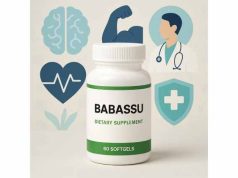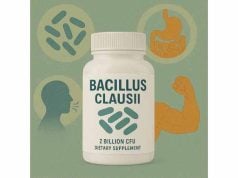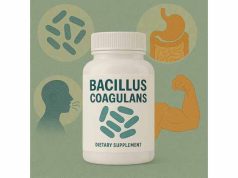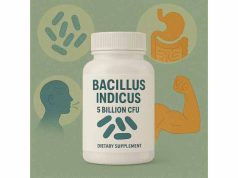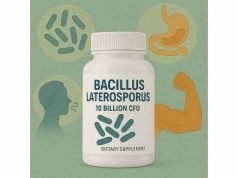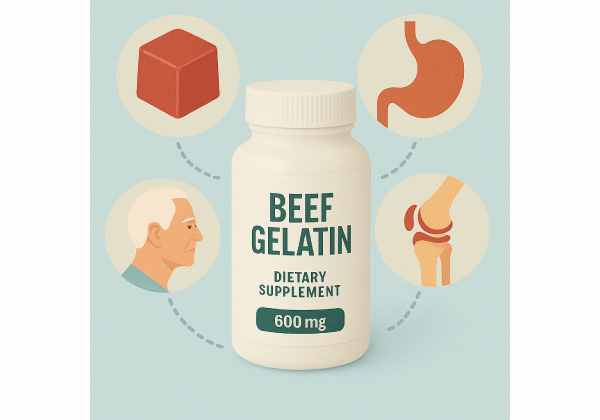
What if a pantry staple could support your joints, gut, and even your skin? Beef gelatin—the same ingredient that gives homemade bone broth its jiggle—offers a unique blend of amino acids known to promote collagen production, digestive wellness, and healthy aging. Beef gelatin stands out for joint mobility, skin elasticity, and aiding in gut lining repair. With its versatile culinary uses and wellness perks, it’s no wonder this classic supplement is making a modern comeback. In this comprehensive guide, you’ll discover what beef gelatin is, how it works in the body, its key benefits, proper ways to use it, and the safety essentials to keep in mind. Read on to find everything you need to know before adding beef gelatin to your daily routine.
Key Takeaways
- Beef gelatin supplies collagen-boosting amino acids that support joints, skin, and gut health.
- It forms a gel when cooled—making it perfect for homemade gummies, desserts, and soups.
- Ideal for individuals with digestive issues, mild joint pain, or those seeking natural anti-aging support.
- Sourced from grass-fed, pasture-raised cattle for purity and maximum benefit.
- Safe for most, but not suitable for vegans/vegetarians or those with beef allergies.
Table of Contents
- Beef Gelatin Explained: How It’s Made and What Sets It Apart
- How Beef Gelatin Works in the Body: Science and Bioactive Compounds
- Top Health Benefits of Beef Gelatin for Joints, Digestion, and Skin
- Beef Gelatin Safety, Tolerability, and Potential Side Effects
- Proper Dosage, Usage, and Preparation of Beef Gelatin
- Frequently Asked Questions About Beef Gelatin
Beef Gelatin Explained: How It’s Made and What Sets It Apart
Beef gelatin is a familiar ingredient for many home cooks, but it’s also one of the oldest, most versatile protein supplements on the market. Derived from the collagen-rich tissues of cattle, beef gelatin offers both culinary flexibility and targeted wellness support for joints, gut lining, and more. Let’s explore what it is, how it’s produced, and why it stands out among natural supplements.
What Exactly Is Beef Gelatin?
At its core, beef gelatin is a pure protein obtained by boiling the connective tissues, skin, and bones of cows. This slow simmering process draws out collagen—a structural protein vital for your body’s strength and resilience. Once cooled, the liquid forms a gel, which is then dried and ground into a fine powder: beef gelatin.
How Is Beef Gelatin Made?
The production of beef gelatin involves several key steps:
- Sourcing: High-quality gelatin comes from grass-fed, pasture-raised cattle, ensuring better amino acid profiles and cleaner end product.
- Extraction: Tissues rich in collagen are simmered in water, breaking down large collagen molecules into partially hydrolyzed chains.
- Filtration and Concentration: The resulting broth is filtered and concentrated to remove impurities and excess water.
- Drying and Milling: The thickened liquid is dried into sheets or powder, then ground for easy use in kitchens and supplement routines.
What Sets Beef Gelatin Apart from Collagen Peptides?
Though related, beef gelatin and collagen peptides have distinct properties:
- Gelatin gels: When dissolved in hot liquid and cooled, gelatin forms a solid, bouncy gel—ideal for desserts, gummies, and aspics.
- Collagen peptides dissolve: Hydrolyzed peptides stay liquid even in cold drinks and are flavorless, making them perfect for shakes or coffee.
Both offer similar amino acids, but gelatin’s gelling ability opens up a world of culinary possibilities.
Culinary and Supplement Uses
Beef gelatin is:
- Widely used in homemade gummies, marshmallows, and jellied desserts
- Added to soups, stews, and sauces for extra body and protein
- Used as a natural thickener in gluten-free and paleo baking
- Taken as a supplement by stirring into hot beverages or broths
Nutritional Profile of Beef Gelatin
A typical tablespoon (about 10 grams) of beef gelatin provides:
- 9–10 grams of protein, nearly pure and low in calories
- No sugar, carbs, or fat
- Rich in glycine, proline, and hydroxyproline—amino acids crucial for collagen synthesis, tissue repair, and detoxification
Why People Choose Beef Gelatin
- Restores and maintains healthy connective tissue
- Supports digestive health and gut lining integrity
- Enhances skin, hair, and nail strength from within
- Easy to use in kitchen and wellness routines
As a time-tested, natural supplement, beef gelatin combines nutrition, versatility, and a long-standing reputation for supporting overall wellness.
How Beef Gelatin Works in the Body: Science and Bioactive Compounds
The science behind beef gelatin is rooted in its amino acid profile and its unique behavior in your digestive system. Let’s break down what happens from the moment you consume beef gelatin—and how it benefits your body on multiple levels.
Key Amino Acids in Beef Gelatin
Unlike many animal or plant proteins, beef gelatin is almost entirely made up of:
- Glycine: Vital for the production of new collagen, detoxification, and nervous system balance.
- Proline and Hydroxyproline: Both essential for the formation and repair of connective tissues like cartilage, ligaments, and skin.
- Glutamic Acid: Supports gut lining health and neurotransmitter production.
These amino acids, though classified as “non-essential” (your body can produce them), become conditionally essential during periods of stress, aging, or injury—meaning you may need more than your body can make.
Digestion, Absorption, and Utilization
When you eat beef gelatin, your digestive enzymes break the long gelatin molecules into shorter peptides and individual amino acids:
- These are absorbed through the gut lining and travel via the bloodstream to where your body needs them most: skin, joints, bones, and even the gut itself.
- Your body then uses these building blocks to repair, restore, and strengthen connective tissues and to support healthy skin and gut lining.
Gut Health: Gelatin as a Mucosal Healer
One of the most celebrated roles of beef gelatin is in gut repair:
- It forms a soothing layer along the digestive tract, protecting and supporting the mucous lining.
- Its glycine content is thought to help “seal” leaky gut by nourishing the cells lining the intestine and supporting their regeneration.
- Regular use may calm symptoms of gastritis, IBS, or general digestive discomfort.
Joint, Bone, and Connective Tissue Support
Gelatin’s amino acids are essential for:
- Repairing and maintaining cartilage, reducing joint pain or stiffness
- Enhancing bone density by supplying the raw materials for collagen synthesis
- Supporting tendons and ligaments—vital for athletic performance and injury recovery
Skin, Hair, and Nail Vitality
Collagen is the foundation of firm, elastic skin. By supplementing with beef gelatin, you may notice:
- Improved skin hydration, elasticity, and a reduction in fine lines
- Stronger, faster-growing hair and nails
- Accelerated wound healing and scar minimization
Detoxification and Metabolism
Glycine, the dominant amino acid in gelatin, plays a key role in detoxification through the liver. It helps neutralize toxins and supports metabolic pathways essential for energy and hormone balance.
Comparing Gelatin to Other Protein Sources
Unlike whey, soy, or pea protein—which are designed for muscle growth—gelatin excels at supporting connective tissue, gut health, and skin. It’s not a complete protein, but it fills important nutritional gaps for many people.
Bioavailability and Synergy
Gelatin is best absorbed when taken with vitamin C and other nutrients needed for collagen synthesis. Combining gelatin-rich foods or supplements with a colorful, balanced diet will maximize your results.
Gelatin is more than just a cooking aid—it’s a functional food that supports your body from the inside out. Up next, explore the specific, evidence-backed benefits and uses that make beef gelatin a standout supplement.
Top Health Benefits of Beef Gelatin for Joints, Digestion, and Skin
Beef gelatin’s benefits reach far beyond the kitchen. Thanks to its rich amino acid profile and gelling properties, it supports some of the body’s most important systems—especially for those with joint, digestive, or skin concerns. Here’s a deep dive into the most validated, real-world uses of beef gelatin.
Joint Comfort and Mobility
Gelatin is a traditional remedy for joint aches and stiffness, and science is starting to explain why:
- Provides the amino acids needed for cartilage regeneration and repair
- May reduce joint pain associated with mild osteoarthritis, exercise, or aging
- Helps maintain joint lubrication and flexibility, supporting active lifestyles
Regular consumption (often 10 grams daily) has been shown to promote measurable improvements in joint comfort, especially when paired with vitamin C and gentle exercise.
Digestive Health and Gut Healing
Gelatin shines for digestive wellness. Its benefits include:
- Coating and soothing the gut lining, making it ideal for those with IBS, gastritis, or acid reflux
- Supporting the repair of damaged mucosal cells—important for healing leaky gut syndrome
- Easing bowel regularity and comfort, thanks to its gentle gelling and hydrating effects
Home cooks have long used gelatin-rich broths and aspics to aid recovery from illness and digestive upset.
Skin Rejuvenation and Healthy Aging
Collagen loss is a hallmark of aging, leading to wrinkles, sagging skin, and slower wound healing. Beef gelatin helps by:
- Boosting collagen production for firmer, plumper, and more elastic skin
- Improving hydration and reducing the appearance of fine lines and dryness
- Supporting faster healing of minor wounds, scrapes, and scars
These benefits usually become noticeable after several weeks of regular gelatin intake.
Bone Strength and Mineralization
The matrix of your bones relies on collagen for strength and flexibility. Gelatin:
- Provides amino acids to support bone matrix and mineral retention
- May aid bone density, especially when combined with adequate calcium and vitamin D
- Is useful for those at risk of osteoporosis or recovering from bone injuries
Metabolic and Detoxification Support
Glycine in beef gelatin:
- Assists in detoxifying chemicals and hormones through the liver
- May improve sleep quality by supporting the body’s natural circadian rhythm
- Helps regulate blood sugar and reduce cravings in some users
Weight Management and Satiety
Gelatin, when included in meals, can:
- Increase satiety and help control appetite, aiding weight management efforts
- Support a balanced metabolism without spiking blood sugar
Who Can Benefit Most from Beef Gelatin?
- Adults with joint pain, stiffness, or mild arthritis
- Athletes or physically active people seeking injury prevention and recovery
- Those with digestive issues or seeking better gut health
- Anyone aiming to support skin, hair, and nail strength as they age
- People interested in traditional foods and whole-food supplements
Realistic Expectations
While beef gelatin is powerful, it is not a quick fix or cure-all. Results are most apparent with regular, consistent use—typically 4–12 weeks for visible changes. Pairing with a healthy lifestyle will enhance all benefits.
In the following sections, we’ll cover beef gelatin’s safety profile, who should avoid it, and how to use it for the best results in your daily routine.
Beef Gelatin Safety, Tolerability, and Potential Side Effects
Beef gelatin is considered safe for most healthy adults and children when used appropriately, whether in food or as a supplement. However, as with all supplements, it’s important to understand who should avoid beef gelatin, recognize possible side effects, and know how it may interact with certain health conditions or medications. Here’s a comprehensive look at beef gelatin’s safety profile and tips for responsible use.
General Tolerability and Common Side Effects
For the majority of users, beef gelatin causes no side effects when consumed in typical dietary amounts. It’s long been used in home cooking, hospital diets, and baby foods. However, with concentrated supplements or unusually high intake, mild side effects may occur, including:
- Bloating or a feeling of fullness
- Mild digestive upset or stomach cramps
- Occasional gas, especially if not dissolved well or if taken on an empty stomach
These effects are usually self-limiting and often resolve by lowering the dose, dividing it throughout the day, or ensuring gelatin is fully dissolved in liquid before consumption.
Allergic Reactions and Food Sensitivities
Though rare, allergies to beef or bovine proteins can occur. Those with a history of allergic reactions to beef, gelatin desserts, or bovine-derived products should avoid beef gelatin entirely. Symptoms may include:
- Itching or skin rash
- Swelling of the lips, face, or throat
- Shortness of breath or difficulty swallowing
If any allergic symptoms develop, discontinue use immediately and seek medical attention.
Who Should Not Use Beef Gelatin?
- Individuals with known beef allergies or sensitivities
- Strict vegetarians or vegans (as it is an animal product)
- Those with certain metabolic or kidney disorders who require low-protein diets
- People with a history of gelatin-induced anaphylaxis or severe food allergies
Potential Interactions with Medications or Medical Conditions
Beef gelatin is classified as a food ingredient, so interactions are very rare. However, take extra care if:
- You have a diagnosed protein metabolism disorder (such as phenylketonuria)
- You are taking medications that require a low-protein or low-tyramine diet
- You are on medications that affect kidney function
As always, check with your healthcare provider if you have a chronic illness or are taking prescription medications before starting any new supplement.
Pregnancy, Breastfeeding, and Children
Beef gelatin is widely used in foods for all age groups and is generally safe for pregnant or breastfeeding women and children in moderate amounts. For supplement-level dosing, consult a healthcare professional before starting.
Gelatin and Chronic Health Conditions
There’s no evidence that beef gelatin aggravates common health issues when used in moderation. In fact, it may be especially beneficial for those with:
- Joint pain or stiffness
- Gut health concerns (like IBS, gastritis, or leaky gut)
- Age-related collagen loss
But those with chronic kidney disease or on dialysis should limit or avoid gelatin due to its protein content.
Purity, Additives, and Quality Concerns
Always select beef gelatin from reputable brands:
- Look for products sourced from grass-fed, pasture-raised cattle and tested for contaminants (heavy metals, hormones, pesticides)
- Avoid flavored gelatins with added sugar, colorings, or artificial ingredients if you’re using gelatin for health purposes
Symptoms to Watch For
Stop use and seek medical help if you experience:
- Severe stomach pain, vomiting, or persistent digestive distress
- Signs of an allergic reaction (swelling, rash, trouble breathing)
- Unexplained changes in health status after starting beef gelatin
Environmental and Ethical Considerations
Responsible sourcing matters. Choose brands that use sustainable, humane practices and are transparent about their supply chain. This ensures not only product quality but also supports environmental stewardship.
Beef gelatin is a time-tested, generally safe supplement for most people. Using it wisely ensures you get the full benefits while minimizing the risk of side effects.
In the next section, discover best practices for dosage, preparation, and seamlessly integrating beef gelatin into your wellness and culinary routines.
Proper Dosage, Usage, and Preparation of Beef Gelatin
Beef gelatin’s versatility makes it easy to incorporate into your daily life, whether for culinary creativity or targeted supplementation. For the best results, follow these evidence-informed guidelines on dosage, preparation, and creative usage.
How Much Beef Gelatin Should You Take?
- General wellness: 1–2 tablespoons (about 10–20 grams) per day, split between meals for optimal absorption
- Joint and gut support: 10 grams daily is a common starting dose; higher intakes up to 20 grams may be beneficial for more pronounced needs
- Culinary use: Adjust to your recipe—1 tablespoon will gel about 2 cups (500 ml) of liquid
Always start with a lower dose to test tolerance and gradually increase as desired.
How to Prepare and Use Beef Gelatin
- To Gel a Liquid: Sprinkle gelatin over cold water (about ¼ cup per tablespoon of gelatin), let it “bloom” for a few minutes, then stir into hot liquid to fully dissolve.
- In Hot Drinks: Add the bloomed gelatin to hot coffee, tea, or broth—stir until smooth.
- For Gummies or Desserts: Combine with fruit juice and a natural sweetener, bloom, then heat and pour into molds for homemade gummies.
- In Savory Dishes: Use gelatin to thicken soups, stews, or gravies, or add to sauces for extra body and nutrition.
Creative Ways to Use Beef Gelatin
- Protein-boosted oatmeal, porridge, or smoothies
- Paleo, keto, or gluten-free baked goods as a binder
- Homemade “jello” snacks with fruit and natural flavors
- Bone broth enhancement for richer flavor and texture
Tips for Best Results
- Always bloom gelatin in cold liquid first to avoid clumping.
- Use with vitamin C-rich foods (like citrus, berries, or peppers) to support your body’s collagen synthesis.
- Stay hydrated, as gelatin’s protein can draw fluid from your system.
- Be patient: Most benefits appear after 4–12 weeks of consistent use.
Combining Gelatin with Other Supplements
Beef gelatin pairs well with:
- Collagen peptides (for a broader amino acid spectrum)
- Vitamin C (collagen production cofactor)
- Anti-inflammatory herbs for joint health (turmeric, boswellia, etc.)
Who Should Use Smaller Amounts?
Those new to gelatin, or with sensitive digestion, should start with 1 teaspoon per day, increasing gradually to minimize potential bloating.
Storage and Shelf Life
Store beef gelatin in a cool, dry place in an airtight container. It’s shelf-stable for months, but always check for off smells or discoloration before use.
When to Use Caution or Adjust Dose
- If you experience bloating, gas, or stomach discomfort, reduce the dose and increase intake more slowly.
- If on a restricted protein diet, consult your healthcare provider before starting regular use.
Summary Table: Usage Guide
| Goal | Amount | Method |
|---|---|---|
| Joint Health | 10–20 g/day | Tea, broth, or added to recipes |
| Gut Healing | 10 g/day | Hot drinks, soups, or gummies |
| Culinary Use | Recipe-based | Desserts, sauces, baked goods |
With a little creativity and consistency, beef gelatin can be a delicious and beneficial addition to your daily wellness routine.
Up next, get clear answers to the most frequently searched questions about beef gelatin, all in one easy reference.
Frequently Asked Questions About Beef Gelatin
What is beef gelatin, and how does it differ from collagen peptides?
Beef gelatin is a protein derived from cooked collagen and forms a gel when cooled. Collagen peptides are hydrolyzed further and dissolve easily in cold liquids without gelling.
Can beef gelatin help with joint pain or arthritis?
Yes, beef gelatin provides amino acids that support cartilage repair and joint lubrication. Many users report less stiffness and better mobility with regular use over several weeks.
Is beef gelatin good for gut health?
Beef gelatin helps coat and soothe the digestive tract, supporting gut lining integrity. It’s especially helpful for those with leaky gut, gastritis, or IBS.
How do you use beef gelatin in recipes?
Bloom gelatin in cold liquid, then dissolve in hot liquids for jellies, gummies, soups, and desserts. It’s a versatile thickener and protein boost for a range of dishes.
Is beef gelatin safe for daily use?
For most healthy adults, daily use is safe. Avoid if you have a beef allergy, or if your doctor has advised a low-protein diet for kidney or metabolic conditions.
How long does it take to see results from beef gelatin?
Most people notice joint, gut, or skin improvements within 4–12 weeks of consistent use, especially when combined with a healthy diet and lifestyle.
Can children and pregnant women use beef gelatin?
Gelatin is widely used in foods for all ages, but supplement-level doses should be discussed with a healthcare provider during pregnancy, breastfeeding, or childhood.
Disclaimer:
This article is for educational purposes only and is not a substitute for professional medical advice, diagnosis, or treatment. Always consult your healthcare provider before beginning any new supplement, especially if you have health conditions or take medication.
If you found this article helpful, please share it on Facebook, X (formerly Twitter), or your favorite social platform—and follow us for more practical wellness tips! Your support helps us continue creating quality health content.


